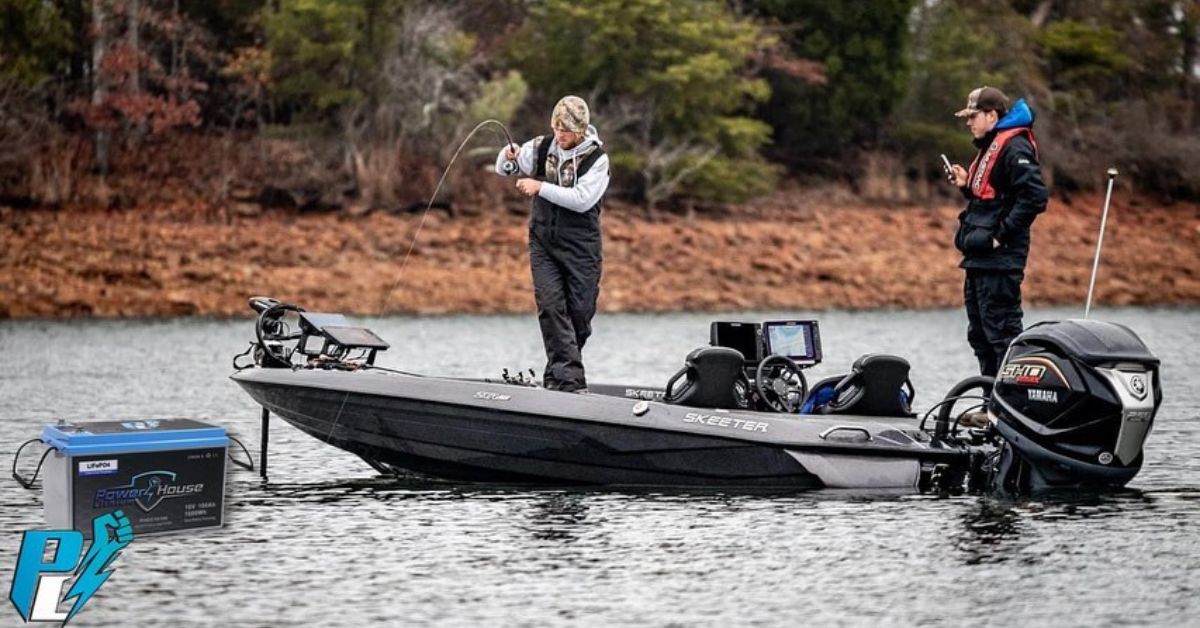Tired of watching your fish finder go dark mid-trip? Sick of your stereo cutting out when you’re trying to enjoy a perfect sunset on the water? These frustrations happen when your single battery gets overwhelmed by multiple electrical demands while trying to keep enough juice for your engine.
A dual battery system solves this problem by separating your starting power from your house loads. When you install a dual battery setup on your boat, you gain the freedom to run electronics, lights, and accessories without compromising your ability to get home safely. The investment pays dividends in peace of mind and extended time on the water.
When You Need a Dual Battery Setup
Several scenarios demand the reliability of dual batteries. Fishing enthusiasts running trolling motors, fish finders, and live wells quickly drain a single battery. Boaters with powerful sound systems, cabin lighting, and electric windlasses face similar challenges.
Sailboat owners particularly benefit from dual battery systems. Extended periods at anchor with refrigeration, navigation equipment, and lighting systems running continuously can easily overwhelm a single battery. The ability to isolate your starting battery ensures you’ll always have power to fire up the engine when weather turns.
Even day boaters discover advantages with this setup. Modern boats carry increasingly sophisticated electronics—GPS units, radar systems, and VHF radios all draw power. Adding USB charging ports, LED lighting upgrades, or inverters for small appliances can push electrical demands beyond a single battery’s capacity.
Understanding Battery Types for Marine Applications
Choosing the right battery chemistry forms the foundation of an effective dual battery system. Each type serves specific purposes, and understanding their strengths guides smart selection.
Starting Batteries
Starting batteries deliver high current bursts for short periods, exactly what your engine needs for ignition. They feature thin plates maximizing surface area for quick power delivery. However, they struggle with deep discharges and repeated cycling damages their internal structure.
Deep-Cycle Batteries
Deep-cycle batteries endure repeated charging and discharging cycles without damage. Their thicker plates withstand the stress of powering electronics for extended periods. These batteries are great for trolling motors, fish finders, and cabin lighting.
Dual-Purpose Batteries
Dual-purpose batteries combine starting power with deep-cycle capability. They work well for smaller boats with modest electrical demands but compromise performance in both areas. Consider them for boats using two identical batteries interchangeably.
Lithium Batteries
Lithium batteries represent the pinnacle of marine battery technology. They deliver consistent voltage throughout discharge cycles, weigh 50-60 percent less than lead-acid equivalents, and last significantly longer. Their ability to handle deep discharges without damage makes them exceptional for house battery applications.
Lithium batteries charge faster and more efficiently than traditional options. They maintain full power output until nearly depleted, unlike lead-acid batteries that gradually lose voltage as they discharge. This characteristic proves invaluable for electronics requiring steady power.

Safety Precautions
Safety comes first when working with boat electrical systems. Always disconnect battery cables before beginning work. Batteries store tremendous energy, and improper handling creates serious hazards.
Never use uninsulated tools near battery terminals—a short circuit can cause explosions or fires. Ensure adequate ventilation, especially around flooded batteries that emit hydrogen gas during charging.
Step-by-Step Installation Guide
Planning Your Installation
Start by determining optimal battery locations. Batteries perform best in cool, well-ventilated areas with easy access for maintenance. Avoid mounting directly above fuel systems or in areas experiencing extreme temperatures.
Calculate cable runs between batteries, switches, and major electrical components. Shorter runs reduce voltage drop and improve system efficiency. Plan for proper ventilation, especially with flooded batteries requiring direct venting to outside air.
Selecting Battery Mounting
Secure mounting prevents dangerous battery movement in rough seas. Battery trays for lithium batteries offer superior protection with heavy-duty aluminum construction and rubber-lined bottoms that reduce vibration. Quality trays include ratchet straps and mounting hardware for complete installation.
Choose mounting locations allowing batteries no more than one inch of movement in any direction. A 200Ah battery weighs approximately 150 pounds—proper securing protects both equipment and crew safety.
Wiring Your Dual Battery System
Begin by installing your battery switch in an accessible location. Traditional OFF-1-2-BOTH switches provide manual control over battery selection. Modern automatic charging relays (ACRs) offer sophisticated management, combining batteries during charging while maintaining isolation during discharge.
Use properly sized marine-grade cables throughout your installation. Undersized cables create voltage drop, reducing system performance and potentially causing dangerous heating. Follow American Boat and Yacht Council (ABYC) standards for wire sizing and circuit protection.
Create clean, tight connections using tinned copper terminals. Apply corrosion inhibitor before crimping and seal connections with adhesive-lined heat shrink tubing. It’s also wise to cover positive terminals with boots, which prevents accidental shorts.
Implementing Charge Management
Your alternator needs proper charge management to effectively maintain both batteries. Automatic Charging Relays excel here, sensing charging voltage and connecting batteries during charging cycles while isolating them during discharge.
ACRs eliminate the voltage drop associated with traditional battery isolators while providing superior charging efficiency. They automatically combine batteries when they detect charging sources and separate them when charging stops, protecting your starting battery from house load drainage.
Maintaining Your Dual Battery System
Regular maintenance extends battery life and ensures reliable performance. Check terminal connections monthly, cleaning any corrosion with baking soda and water. Inspect cables for chafing or damage, replacing questionable components immediately.
Monitor charging voltages using a quality marine voltmeter. Proper charging maintains battery health while preventing overcharging damage. Consider installing battery monitors providing real-time information regarding the state of charge and system performance.
For flooded batteries, check electrolyte levels regularly and maintain proper specific gravity. AGM and lithium batteries require minimal maintenance but benefit from periodic voltage checks and connection inspections.
The Aluminum Battery Tray Advantage
When running a dual battery setup on your boat, secure mounting becomes even more critical. Aluminum battery trays are ideal for safely holding two batteries side by side, ensuring both units stay anchored in even the roughest marine conditions. Their robust construction offers superior stability, while the rubber-lined bottoms absorb vibration and prevent shifting as your boat moves. These characteristics not only extend battery life but also reduce the risk of electrical issues or accidental disconnections caused by battery movement.
For marine dual battery systems, high-quality aluminum trays are the first line of defense against corrosion and rough waters. Stainless steel hardware and durable ratchet straps deliver peace of mind that both batteries are secure—helping protect your investment and keeping your onboard electrical system safe and reliable.

Powering Your Marine Adventures
When you install a dual battery setup on your boat, you’re investing in extended time on the water and peace of mind. Dual battery systems eliminate the fear of dead batteries while empowering you to make full use of modern marine electronics.
For a dual battery system to truly deliver reliability and safety, secure battery mounting will be necessary. PowerHouse Lithium’s heavy-duty aluminum battery trays are ideal for marine environments, providing exceptional strength and corrosion resistance. Each tray features a 3mm rubber protection pad that reduces vibration and helps keep your battery securely in place, even in rough water. Whether you need a tray for a single lithium battery or a multi-bank setup, PowerHouse Lithium offers a variety of sizes to fit your exact needs.
Don’t leave your marine power system to chance. Upgrade to PowerHouse Lithium’s battery trays and enjoy peace of mind knowing your investment is protected with professional-grade hardware. Explore the full collection and choose the perfect fit for your boat.

